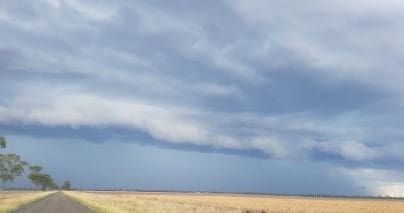OPINION
Dennis Ward, managing director of specialist birdseed manufacturer, Avigrain, discusses how Australian agriculture needs to adapt to climate change and supply chain volatility.
DROUGHT and dying stock, floods and wiped out crops. The on-farm impacts of an increasingly volatile climate are easy to spot and widely reported.
It is often forgotten that these farmers are selling their produce into a supply chain and that the businesses in that supply chain are also affected by climate volatility.
Land is land, it will stay where it is, but a downstream processing business can and will move to where it makes the most profit and takes the least risk.
Or it will fail, never to return, leaving farmers and graziers without a market when they do have good years.
And agriculture will have good years – in 2016 Australia grew its largest ever winter crop.
Climate change means volatility not ongoing calamity.
Failed businesses and strategic restructuring leave rural and regional communities without vital sustainable jobs and rural Australia understands this flows through to slowly dying rural communities.
Crushing closure ripple effect
In October 2018 Cargill made the decision to close its cottonseed crushing plant at Narrabri in north west New South Wales.
A co-product of the cotton ginning process, cottonseed can be used domestically or exported as a hi-protein cattle feed or further processed to make cottonseed oil.
The 2018 east coast drought created huge demand for stockfeed and drove the price of cottonseed to unprecedented highs.
Cargill decided that the supply of cottonseed feedstock would not be consistent enough in the future to justify continued oilseed crushing operations at Narrabri.
Twenty-five staff lost their jobs, twenty-five families their paychecks and that loss rippled through the town.
When the season turns and feed returns, cattle producers will no longer demand supplementary feed at any price.
Cotton ginners will no longer have an oilseed processing industry as a market and they have lost year in year out export customers like China who want producers who can supply consistently.
This means, in good years, cottonseed will be difficult to sell, further undermining other rural industries, cotton ginners, sellers of competing protein meals such as canola meal and other stockfeed manufacturers competing with cottonseed.
This is just one example of many of how climate driven supply volatility drives price volatility and undermines rural industries.
In the Murrumbidgee Irrigation Area (MIA) this year, low water allocations, horticulture requirements and the high price of cotton and water meant that the rice crop was at an al- time low.
This flowed through to loss of 100 processing jobs and ongoing reallocation of Sunrice activities and resources to other production areas.
When water returns to the rivers will those jobs return? If the jobs return, will qualified staff be there to take them up?
Is it viable to have whole supply chains spring out of nowhere, stay dormant for years, then be expected to re-emerge on demand?
Switch on, switch off?
In 2016 Australia exported over 2 million tonnes of chickpeas at very high prices, a bonanza for rural Australia, driven by climate disruption in India where monsoon rains were very poor.
In 2019 the river is flowing backwards, with millions of tonnes of cereals being shipped from Western Australia to meet East Coast feed demand after 2018’s winter crop failure.
These are huge logistical undertakings to have to switch on and off. Where do the staff, the infrastructure, the containers, the trucks, the trains come from? Where do they go when it’s all over?
This year upcountry feed users such as feedmills, flour mills, pig, poultry, livestock and dairy producers are at a disadvantage to those closer to the ports and lose their market share, hanging on as best they can until next season when it all turns around. Or they close down and stay closed?
Multi-year contracts
How do we combat this climate-driven supply volatility? One idea could be to develop multi-year supply contracts at prices that are sustainable for all in the supply chain.
That way processors can invest, hold long positions to ride out annual supply volatility, contract their customers and employ and develop staff with certainty.
This requires mutually beneficial collaboration right through the supply chain to the customer rather than the adversarial approach to trading which dominates rural supply chains today.
Rural Australia needs profitable rural processing industries as a market and as a source of regional employment.
We must discuss how to adapt to climate and supply volatility before Australia completely loses processing capacity and becomes an occasional exporter of agricultural raw materials and an importer of all processed food.
Dennis Ward is the managing director of Avigrain and a member of Farmers for Climate Action.


HAVE YOUR SAY